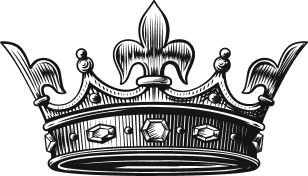Over the past few months, I’ve shared some tips that I hope will be useful if you’re updating your B2B website. We just launched our new site—hooray!—so I can finally put up this post: Part III, on headlines.
We have a Content Bureau saying about writing web home page copy: “We write it first, and we write it last.” Home page copy is the hardest copy to write because it’s the showcase for your site’s key message and voice—and both are likely to evolve while you’re creating your site.
Headlines are similar in that we write them early and then often rewrite them near the very end of a web copywriting project. Here’s how we came up with the headlines on our own site, as we’ve done for dozens (hundreds?) of our clients’ sites:
1. Select an overall theme for your new site, and make that your home page headline. This sounds easy, but it can take weeks. To come up with our home page headline, we first stated our value proposition. Next, we analyzed our competitors’ sites. We then identified themes that we thought would convey our unique Content Bureau capabilities and corporate culture to our readers (while also serving as inspiration to our design team). Our winning theme, which is currently featured in the headline at the top of our new home page: “We’re your secret weapon.”
2. Brainstorm headlines. Go really crazy here—come up with as many as you can. Work with your editor to choose a headline convention capable of incorporating the key message of each page, as well as its SEO keyphrase. For example: on our technology industry landing page, as on our other industry landing pages, the “Pssst!” reinforces our secret weapon theme. “[Industry] marketing writers” is the keyphrase. Refine your headlines together until you love them all.
3. Write all your site copy. You and I both know how quick and easy this is! Like totally not; here’s a post on that topic.
4. Flow your copy into layout. How do your headlines look? Consider tweaking the design to fit the copy, tweaking the copy to fit the design, or both. Your lead writer and designer will likely work together to come up with the winning headline convention. When they do, celebrate! This is a major milestone.
5. Test your headlines using these three criteria:
- Ensure each headline clearly conveys what content the reader will find on each page, and use design to emphasize the most important words. On our high-level pages—About, Work, Clients—we use a [verb][adjective][page name] structure. For example, “Learn about our GORGEOUS WORK” is the most prominent headline copy on our Work page, since that’s what this page is about.
- Also ensure your headline structure is similar for all similar pages. For example, we have 30 pages that describe our services, and they each use the same headline structure: “Shhh! We hear you need [service][verb].” The [service][verb] combo, like “eBook writing” on our eBook page, is our most important SEO keyphrase for that page.
- Put your headlines in a row, and check them to ensure you’ve used unique, inviting, complementary language across all your headlines. Move or swap words to avoid duplicates and ensure you have the most pleasing combinations of words. Taken as a whole, your headlines should convey your value proposition and support your home page headline (your site’s theme).
Even if you skip all our body copy—which would be a crying shame!—we hope our readers will learn from our headlines that our agency delivers the highest quality work and service, along with a tad bit of whimsy.
How do you like our new headlines? Are we walking the talk? Care to discuss your own headline writing trials and tribulations? We’d love to hear from you on Facebook.


